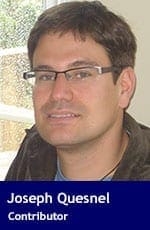Fee simple land ownership by First Nations would unlock real gains in terms of increased land values and economic opportunity
 It is time for Canada to confront its colonial legacy and take decisive steps toward ending it. Granting the 630 First Nations in the country full and unconditional title to their reserve lands is a crucial and necessary first step. This issue should no longer be a subject of controversy and must transcend partisan politics. It is a matter of fundamental justice and reconciliation.
It is time for Canada to confront its colonial legacy and take decisive steps toward ending it. Granting the 630 First Nations in the country full and unconditional title to their reserve lands is a crucial and necessary first step. This issue should no longer be a subject of controversy and must transcend partisan politics. It is a matter of fundamental justice and reconciliation.
However, granting title to reserve lands is – again – just the first step. Individual First Nations must also go further by providing their people with the right to own land in fee simple, as all other Canadians can. This would ensure true equality and empower First Nations individuals to participate fully in the economic life of the country.
The need to do so became clear to me when I appeared as a witness before the House of Commons Standing Committee on Indigenous and Northern Affairs last April. The committee was looking at how the housing shortage was impacting Indigenous peoples. No surprise: testimony kept coming back to how First Nations on reserve were locked out of modern economic life by provisions of the Indian Act that prevent land from being bought and sold on the market.
Fee-simple land ownership is the norm in Canada, allowing owners to rent or sell their land and use it as collateral for loans. It is unjustifiable to deny individual First Nations people the right to fee simple title when many of the country’s 43 fully self-governing First Nations already possess this privilege.
Examples like the Tsawwassen First Nation in British Columbia, self-governing since 2009, the Labrador Inuit Nunatsiavut Government, and the Metis settlement governments in Alberta and Nunavut demonstrate that all First Nations, regardless of their governance structure, should have the option to receive title over their lands in fee simple.
Critics often argue that granting property rights on reserves will lead to the dispossession of First Nations’ lands. However, this argument has been debunked by real-life examples. Self-governing First Nations have shown their ability to ensure that land remains within the community by imposing restrictions on land transfers and non-Indigenous land ownership. They exercise their land rights responsibly, safeguarding their communities and protecting their lands from external interests.
The Nisga’a Nation in British Columbia serves as a successful example. Through the implementation of the Landholding Transition Act in 2012, Nisga’a members were given the opportunity to own residential lots, comprising only 0.05 per cent of their total lands. Data indicates that this cautious approach has been successful, with no defaults on mortgage payments and all 76 parcels of land owned by Nisga’a citizens. This is far from the doomsday scenario of mass privatization often invoked by opponents.
Another example is the James Bay Cree government, which removed the 75-year limit on land leases in 2019. This change has empowered Cree members to build equity in their homes without relying on band guarantees for mortgages. However, it has been cautious in the roll-out of this new housing strategy. For example, it helps teach new owners and renters about financial literacy and home maintenance.
During the Harper government years, the First Nations Tax Commission proposed the First Nations Property Ownership Initiative. This initiative aimed to transfer title from the Crown to participating First Nations, giving them the power to grant individual property rights or adopt protective measures to safeguard communal lands. Such an approach would respect existing treaty and Indigenous rights, as the land would always remain under First Nations jurisdiction.
Unfortunately, the law was never introduced, and the Liberals did not take it up again.
While some argue that the Framework Agreement on First Nation Land Management Act (FNLMA) renders full property ownership unnecessary, adopting the FNLMA framework alone falls short of addressing the underlying issues. Although it allows First Nations more control over land management, the land remains as reserve land. Opening up even a small percentage of reserve lands to fee simple ownership would unlock real gains in terms of increased land values and economic opportunity.
Adopting the FNLMA framework is a great option for First Nations, but ending colonialism means full property rights to individual First Nations people and trusting communities to make correct decisions.
Joseph Quesnel is a senior research associate with the Frontier Centre for Public Policy.
For interview requests, click here.
The opinions expressed by our columnists and contributors are theirs alone and do not inherently or expressly reflect the views of our publication.
© Troy Media
Troy Media is an editorial content provider to media outlets and its own hosted community news outlets across Canada.


